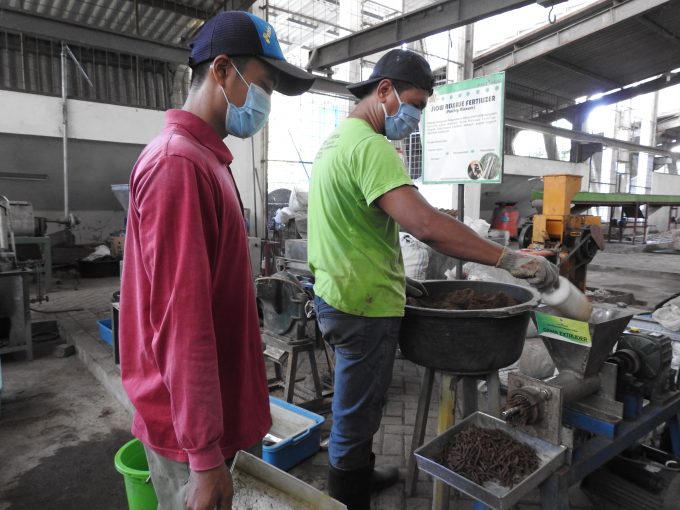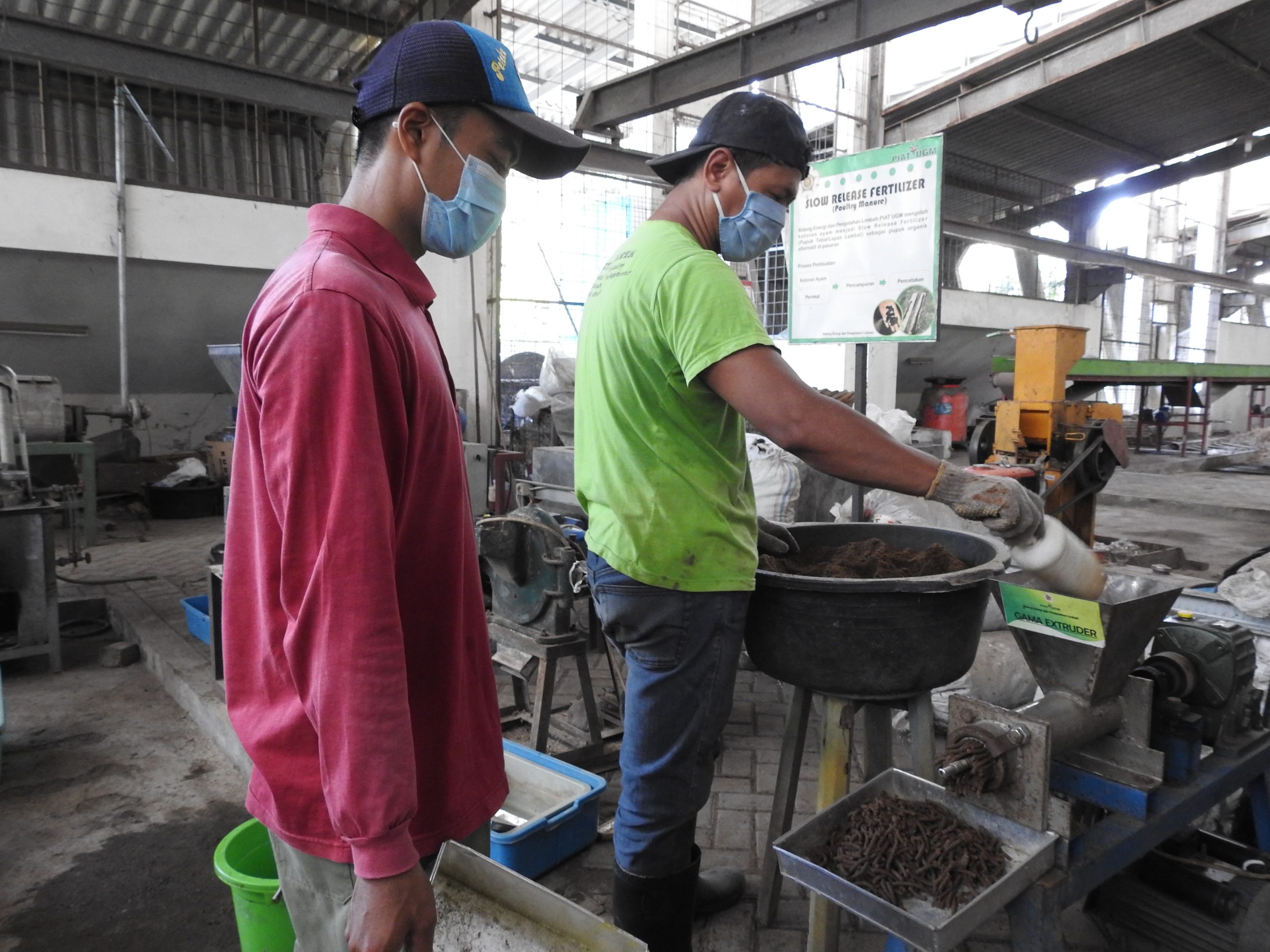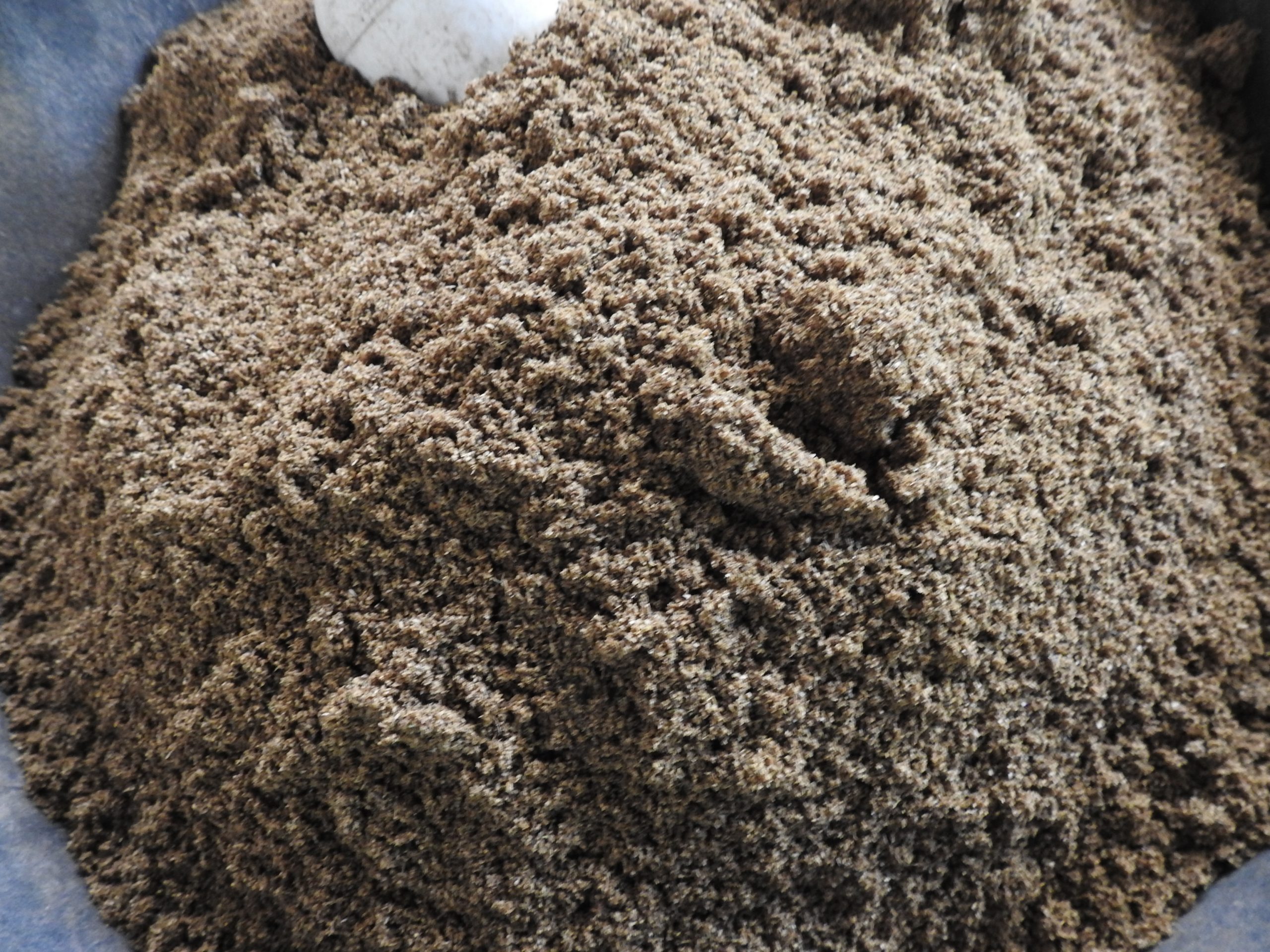
Feed is one of the main components in freshwater fish farming activities. The contribution of feed costs could reach 70% of the total production cost, where currently most of the feed ingredients still have to be imported, this causes commercial feed ingredients to be more expensive. The high price of feed when compared to the selling price of cultivated fish is sometimes not profitable. An alternative solution that could be pursued is to make homemade feed through simple techniques by utilizing relatively cheaper raw material sources with adequate nutritional value.
One of the local resources that could be used in the process of making fish feed is chicken blood waste from the Chicken Slaughterhouse (RPA). Chicken blood could be processed into flour which will later be useful as a high protein source for cultured fish. In addition, blood flour also contains quite complete essential amino acids, namely the amino acids leucine, methionine, and tryptophan. Fish feed pellets using blood flour as a source of feed protein will be able to reduce production costs without reducing nutrient value so that profits could be increased.
The existence of PT. Ciomas Adisatwa at PIAT UGM with a capacity of 600 liters of blood waste per day, is an opportunity for PIAT to use the blood waste into flour which can be used as an addition to making fish pellets. The process of making fish pellets carried out at PIAT UGM is as follows:
- Mixing raw materials, namely blood flour, soybean meal, onggok (dregs of tapioca flour processing), papaya flour, bran, tapioca flour, pollard, feed burger sauce, molasses, and water, using a mixer machine.
- The mixed raw materials are put into the pellet machine, then the pellets are drained into the container.
- Pellets are dried in the sun for 3-5 days (depending on the weather).
- The dried pellets are put into the dryer for the next drying process for 3 hours.
- Pellets are ready to be given to cultured fish.



